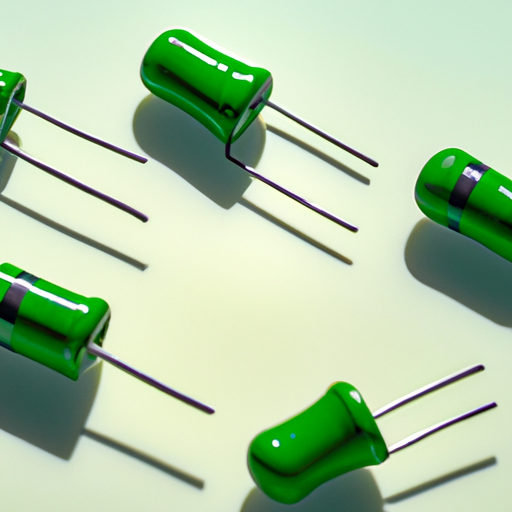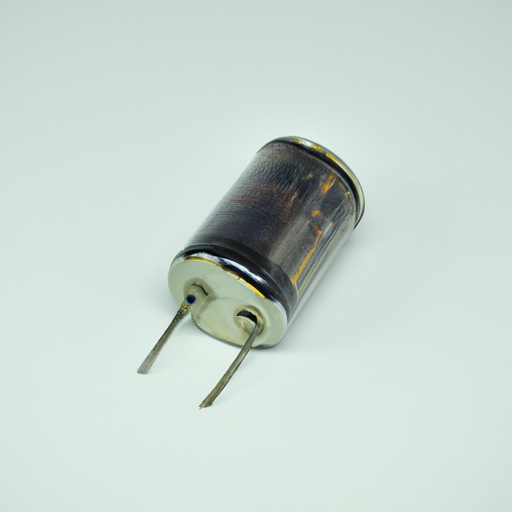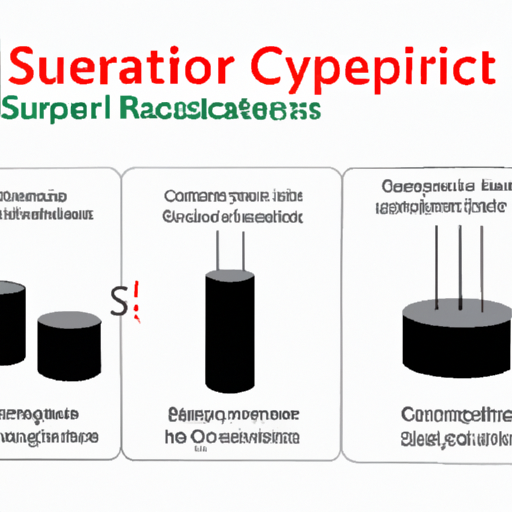Current Situation of the Capacitor Industry
I. Introduction
Capacitors are fundamental components in electronic circuits, serving as energy storage devices that can release energy quickly when needed. They play a crucial role in various applications, from power supply smoothing to signal coupling and decoupling. The capacitor industry is significant in the global market, supporting a wide range of sectors, including consumer electronics, automotive, telecommunications, and renewable energy. This article aims to provide an in-depth analysis of the current state of the capacitor industry, exploring its historical context, market dynamics, technological advancements, challenges, and future outlook.
II. Historical Context
The development of capacitors dates back to the 18th century with the invention of the Leyden jar, one of the first devices capable of storing electrical energy. Over the years, capacitor technology has evolved significantly, with advancements in materials and manufacturing processes leading to the development of various capacitor types. Key milestones include the introduction of electrolytic capacitors in the early 20th century, which allowed for higher capacitance values in a smaller form factor, and the emergence of ceramic and film capacitors, which offered improved stability and reliability. These innovations have paved the way for the diverse capacitor landscape we see today.
III. Types of Capacitors
Capacitors come in various types, each with unique characteristics and applications:
A. Overview of Different Types of Capacitors
1. **Ceramic Capacitors**: Known for their small size and reliability, ceramic capacitors are widely used in high-frequency applications, such as RF circuits and decoupling in power supplies.
2. **Electrolytic Capacitors**: These capacitors are known for their high capacitance values and are commonly used in power supply circuits, audio equipment, and energy storage applications.
3. **Film Capacitors**: Made from plastic films, these capacitors offer excellent stability and low loss, making them suitable for applications in audio equipment, power electronics, and automotive systems.
4. **Tantalum Capacitors**: Known for their high capacitance and reliability, tantalum capacitors are often used in compact electronic devices, including smartphones and laptops.
5. **Supercapacitors**: These energy storage devices bridge the gap between traditional capacitors and batteries, offering high capacitance and rapid charge/discharge capabilities. They are increasingly used in renewable energy systems and electric vehicles.
B. Applications of Each Type in Various Industries
Each type of capacitor serves specific functions across different industries. For instance, ceramic capacitors are prevalent in consumer electronics, while electrolytic capacitors are essential in power supply circuits. Film capacitors find applications in audio and automotive systems, whereas tantalum capacitors are favored in compact devices. Supercapacitors are gaining traction in renewable energy and electric vehicle applications due to their ability to store and release energy quickly.
IV. Market Overview
A. Global Market Size and Growth Trends
The global capacitor market has experienced steady growth, driven by the increasing demand for electronic devices and the rise of renewable energy technologies. According to recent market research, the capacitor market is projected to reach approximately $30 billion by 2025, growing at a CAGR of around 5% from 2020 to 2025.
B. Key Players in the Capacitor Industry
1. **Major Manufacturers and Their Market Share**: The capacitor industry is dominated by several key players, including Murata Manufacturing, Vishay Intertechnology, and KEMET Corporation. These companies hold significant market shares due to their extensive product portfolios and strong distribution networks.
2. **Emerging Companies and Startups**: In addition to established manufacturers, several emerging companies and startups are entering the market, focusing on innovative capacitor technologies and sustainable materials. These new entrants are contributing to increased competition and driving advancements in the industry.
C. Regional Analysis of the Capacitor Market
1. **North America**: The North American capacitor market is characterized by a strong presence of major manufacturers and a growing demand for advanced electronic devices.
2. **Europe**: Europe is witnessing significant growth in the capacitor market, driven by the automotive and renewable energy sectors. The region is also focusing on sustainability and environmentally friendly capacitor solutions.
3. **Asia-Pacific**: The Asia-Pacific region is the largest market for capacitors, primarily due to the presence of major electronics manufacturers in countries like China, Japan, and South Korea. The region is expected to continue its dominance in the coming years.
4. **Rest of the World**: Emerging markets in Latin America and the Middle East are also showing potential for growth in the capacitor industry, driven by increasing industrialization and demand for electronic devices.
V. Technological Advancements
A. Innovations in Capacitor Design and Materials
Recent advancements in capacitor design and materials have led to improved performance and reliability. Manufacturers are exploring new dielectric materials and construction techniques to enhance capacitance and reduce size.
B. Impact of Nanotechnology on Capacitor Performance
Nanotechnology is playing a crucial role in enhancing capacitor performance. By utilizing nanomaterials, manufacturers can create capacitors with higher energy density and improved charge/discharge rates, making them suitable for advanced applications.
C. Development of Environmentally Friendly Capacitors
As environmental concerns grow, the capacitor industry is focusing on developing eco-friendly capacitors. This includes using sustainable materials and manufacturing processes that minimize environmental impact.
D. Trends in Miniaturization and Increased Capacitance
The trend toward miniaturization in electronics is driving the demand for smaller capacitors with higher capacitance values. Manufacturers are investing in research and development to meet these demands while maintaining performance and reliability.
VI. Challenges Facing the Capacitor Industry
A. Supply Chain Disruptions and Material Shortages
The capacitor industry has faced significant challenges due to supply chain disruptions and material shortages, particularly during the COVID-19 pandemic. These issues have led to increased lead times and higher costs for manufacturers.
B. Competition from Alternative Energy Storage Solutions
The rise of alternative energy storage solutions, such as lithium-ion batteries, poses a challenge to the capacitor industry. While capacitors offer unique advantages, they must compete with the growing popularity of batteries in various applications.
C. Regulatory Challenges and Environmental Concerns
Regulatory challenges related to environmental sustainability are becoming increasingly important for the capacitor industry. Manufacturers must comply with regulations regarding hazardous materials and waste management, which can impact production processes and costs.
D. Price Volatility of Raw Materials
The price volatility of raw materials, such as tantalum and aluminum, can significantly affect the capacitor industry. Fluctuations in material costs can lead to increased production expenses and impact profit margins for manufacturers.
VII. Future Outlook
A. Predictions for Market Growth and Technological Advancements
The capacitor market is expected to continue its growth trajectory, driven by advancements in technology and increasing demand for electronic devices. Innovations in capacitor design and materials will play a crucial role in shaping the future of the industry.
B. Potential Impact of Electric Vehicles and Renewable Energy on Capacitor Demand
The growing adoption of electric vehicles and renewable energy technologies is likely to drive demand for capacitors. Supercapacitors, in particular, are expected to see increased usage in energy storage systems and electric vehicle applications.
C. Role of Capacitors in the Internet of Things (IoT) and Smart Devices
As the Internet of Things (IoT) and smart devices become more prevalent, the demand for capacitors will rise. Capacitors are essential for ensuring stable power supply and signal integrity in these interconnected devices.
D. Opportunities for Innovation and Investment in the Capacitor Industry
The capacitor industry presents numerous opportunities for innovation and investment. Companies that focus on developing advanced capacitor technologies and sustainable materials are likely to thrive in the evolving market landscape.
VIII. Conclusion
In summary, the capacitor industry is at a pivotal point, characterized by technological advancements, market growth, and emerging challenges. As capacitors continue to play a vital role in various applications, their importance in the modern economy cannot be overstated. Stakeholders in the industry must adapt to changing market dynamics, invest in innovation, and prioritize sustainability to remain competitive in the years to come.
IX. References
A comprehensive list of sources and further reading materials can be provided for those seeking an in-depth understanding of the capacitor industry and its current situation.













